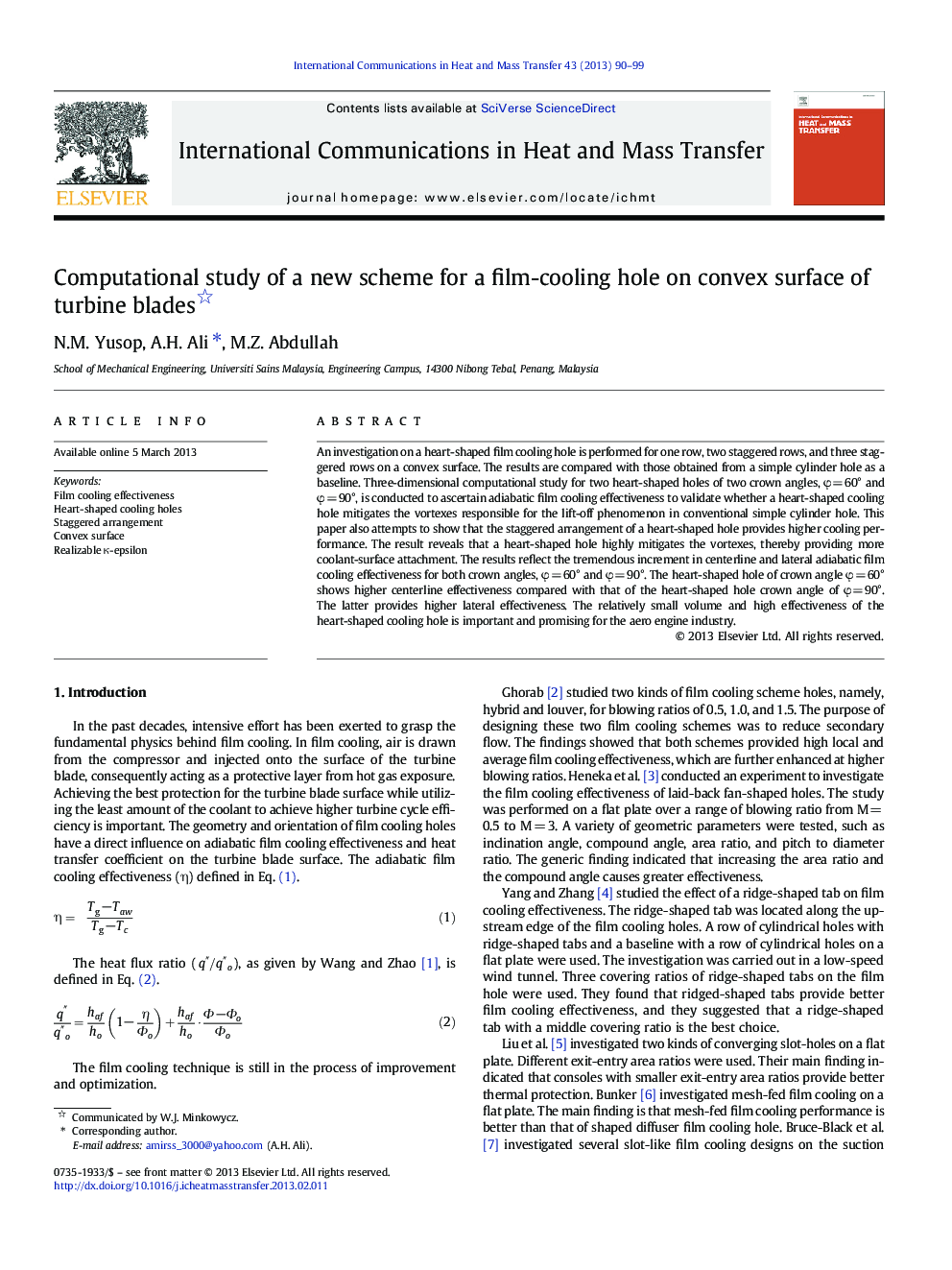| Article ID | Journal | Published Year | Pages | File Type |
|---|---|---|---|---|
| 653460 | International Communications in Heat and Mass Transfer | 2013 | 10 Pages |
Abstract
An investigation on a heart-shaped film cooling hole is performed for one row, two staggered rows, and three staggered rows on a convex surface. The results are compared with those obtained from a simple cylinder hole as a baseline. Three-dimensional computational study for two heart-shaped holes of two crown angles, Ï = 60° and Ï = 90°, is conducted to ascertain adiabatic film cooling effectiveness to validate whether a heart-shaped cooling hole mitigates the vortexes responsible for the lift-off phenomenon in conventional simple cylinder hole. This paper also attempts to show that the staggered arrangement of a heart-shaped hole provides higher cooling performance. The result reveals that a heart-shaped hole highly mitigates the vortexes, thereby providing more coolant-surface attachment. The results reflect the tremendous increment in centerline and lateral adiabatic film cooling effectiveness for both crown angles, Ï = 60° and Ï = 90°. The heart-shaped hole of crown angle Ï = 60° shows higher centerline effectiveness compared with that of the heart-shaped hole crown angle of Ï = 90°. The latter provides higher lateral effectiveness. The relatively small volume and high effectiveness of the heart-shaped cooling hole is important and promising for the aero engine industry.
Related Topics
Physical Sciences and Engineering
Chemical Engineering
Fluid Flow and Transfer Processes
Authors
N.M. Yusop, A.H. Ali, M.Z. Abdullah,
